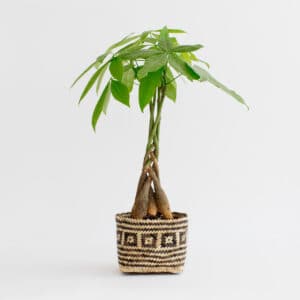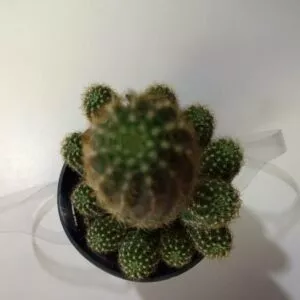No products in the cart.
Table of Contents
What sets apart Schefflera arboricola is its umbrella-shaped foliage. Hence, it’s otherwise called a dwarf umbrella plant. It’s a beautiful tropical species that originated in Australia, Taiwan, and Hainan, almost similar to its relative Schefflera actinophylla. The only main difference is their size.
Although this species is a flowering one, it is mainly grown for its foliage. It’s among the list of popular indoor plants because of its manageable size. On top of that, the care and maintenance of schefflera plant are very basic. One need not be a pro in order to grow one at home.
Give a quick glance at the table below to see the basic things this umbrella plant needs:
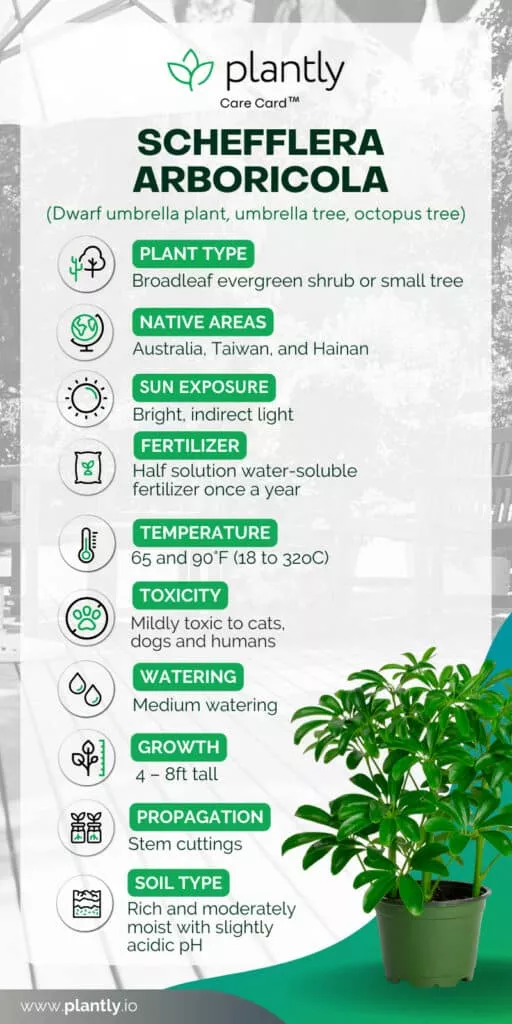
Schefflera Arboricola Plant Care Basics

Schefflera plant care is just basic. This plant won’t give you many headaches. But it doesn’t mean that you go happy to go lucky
Recommended Potting Mix
Schefflera plants love a loose potting mix. Choose one that’s rich in organic matter. You can add compost to the potting media and a part of sand to make it well-draining. The recommended potting mix should have a slightly acidic pH (6.0 to 6.5). You can measure this using a pH meter.
Waterlogged soils are not good for schefflera plants. This could easily lead to the plant’s demise. So, make sure you get the right potting soil right at the very start.
Lighting
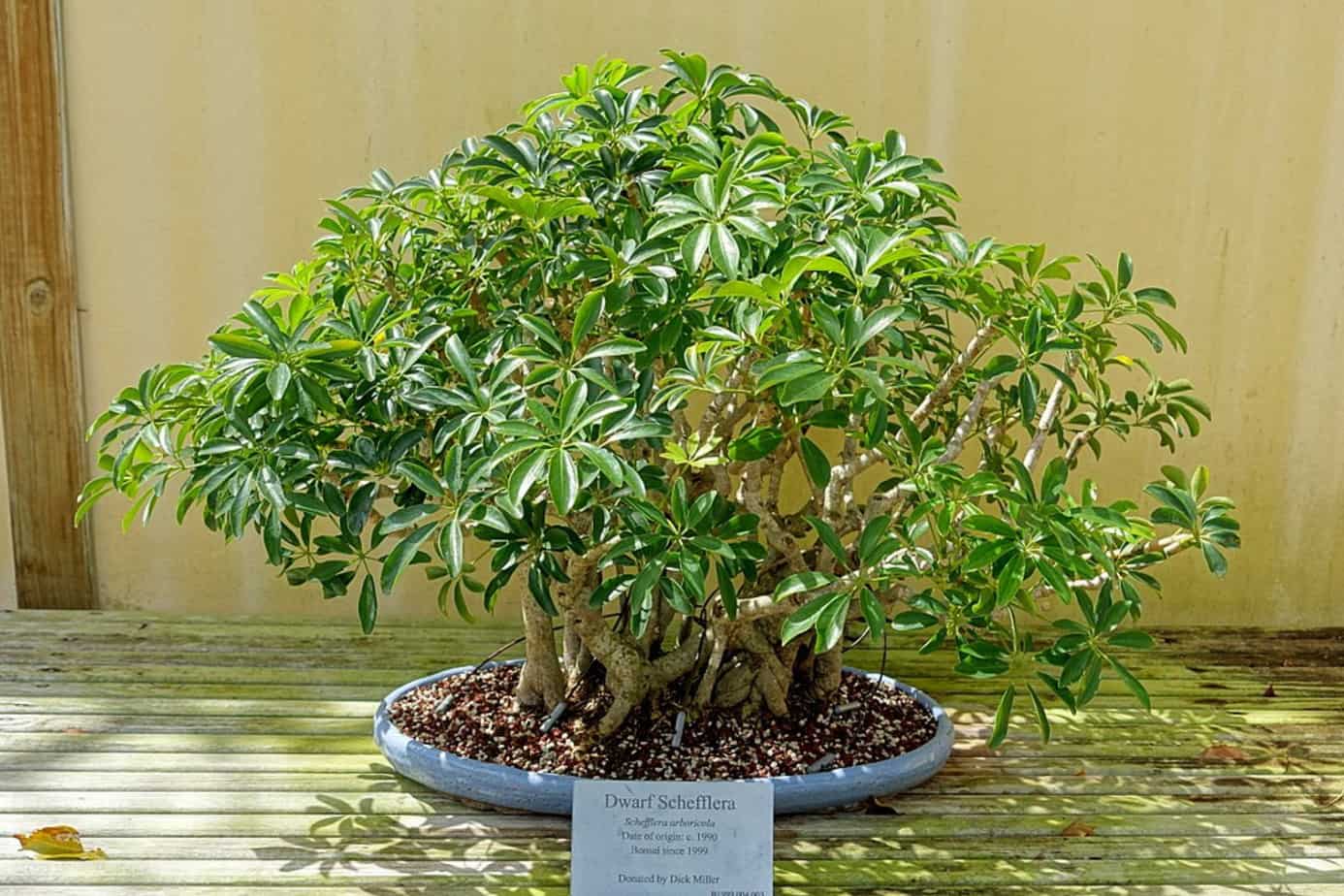
Like with most species of indoor plants, a bright indirect light best suits the plant schefflera. For indoor settings, one common struggle observed is the appearance of droopy and leggy schefflera. This is a result of low exposure to bright light.
In this case, you may have to move your umbrella plants outside for better lighting. However, avoid placing it under direct sunlight.
Watering Needs
Schefflera houseplants need medium watering. This means that you may allow the soil to dry out first before watering again. Unregulated watering will lead to waterlogging which may further cause serious problems like root rot. So, water only when it’s necessary.
If you notice yellow leaves appearing in your dwarf umbrella plant, it could mean two things. Either the plant is overwatered, meaning the roots are damaged. Or, it could be due to underwatering leaving the plant dehydrated and wilted.
Temperature & Humidity

A temperature range between 65 and 90°F (18 to 32oC) is well-suited for schefflera plants. Since the dwarf umbrella is a tropical plant, it benefits well in a warm environment that has sufficient humidity levels. To keep the plant vibrant, make sure it receives enough moisture.
When it gets too dry, spraying water on the leaves will help these plants thrive. Using a humidifier is the best way to increase humidity if you treat these beauties as an indoor plant.
Necessary Fertilizer
Generally, the plant schefflera wouldn’t need regular fertilization. However, if you’re just starting from a new, young plant, feeding it during the growing season is crucial. You may use diluted liquid fertilizer to feed the plant twice a week.
Once the plant is mature and established, you would only have to fertilize it once a year. You can use a half-solution water-soluble fertilizer.
Propagation

Stem cuttings are the best way to go when it comes to propagating a schefflera plant. During spring, cut a mature stem to a size of 4 to 6 inches. Make sure to cut a stem that has nodes in it. Remove the basal leaves before you dip the cut tip in a rooting hormone.
Plant in cutting in a growing media.
The newly propagated stem cutting will lose its moisture through the remaining leaves. To prevent wilting, you may cover the plant with a plastic sheet to maintain high humidity around the plant. Keep the soil slightly moist so the roots will begin to grow.
Growth Zone

Good news for those living in areas under USDA Growth Zones 10 to 12. Schefflera plants will thrive in these places as it offers climatic condition suitable for their growth.
Potting and Pruning
An important part of Schefflera arboricola plant care is proper potting and pruning. Remember this species is like a small tree. It can easily fill in a container in just a year. So, be ready to do repotting as frequently as possible. However, if you wish to slow the growth rate of your dwarf schefflera, you may delay repotting to keep the roots bound.
Because of its spreading habit, you will have to prune back your schefflera houseplant from time to time. Using a sharp pruning shear or scissors, trim down overgrown branches and foliage. This will keep the schefflera plant in shape. Please don’t forget to also prune diseased, aged, or yellow leaves.
Other Schefflera Species and Varieties
Schefflera actinophylla

This species is almost similar in appearance to the S. arboricola. The only main difference is that the S. actinophylla is larger in size. If grown outdoors, it can grow up to 50 feet in height!
{Images: Schefflera Madame De Smet}
Schefflera ‘Madame De Smet’

This variety is the size of the dwarf umbrella plant. However, it has more attractive foliage with its variegation. The foliage is a combination of green and pale yellow.
Schefflera alpina
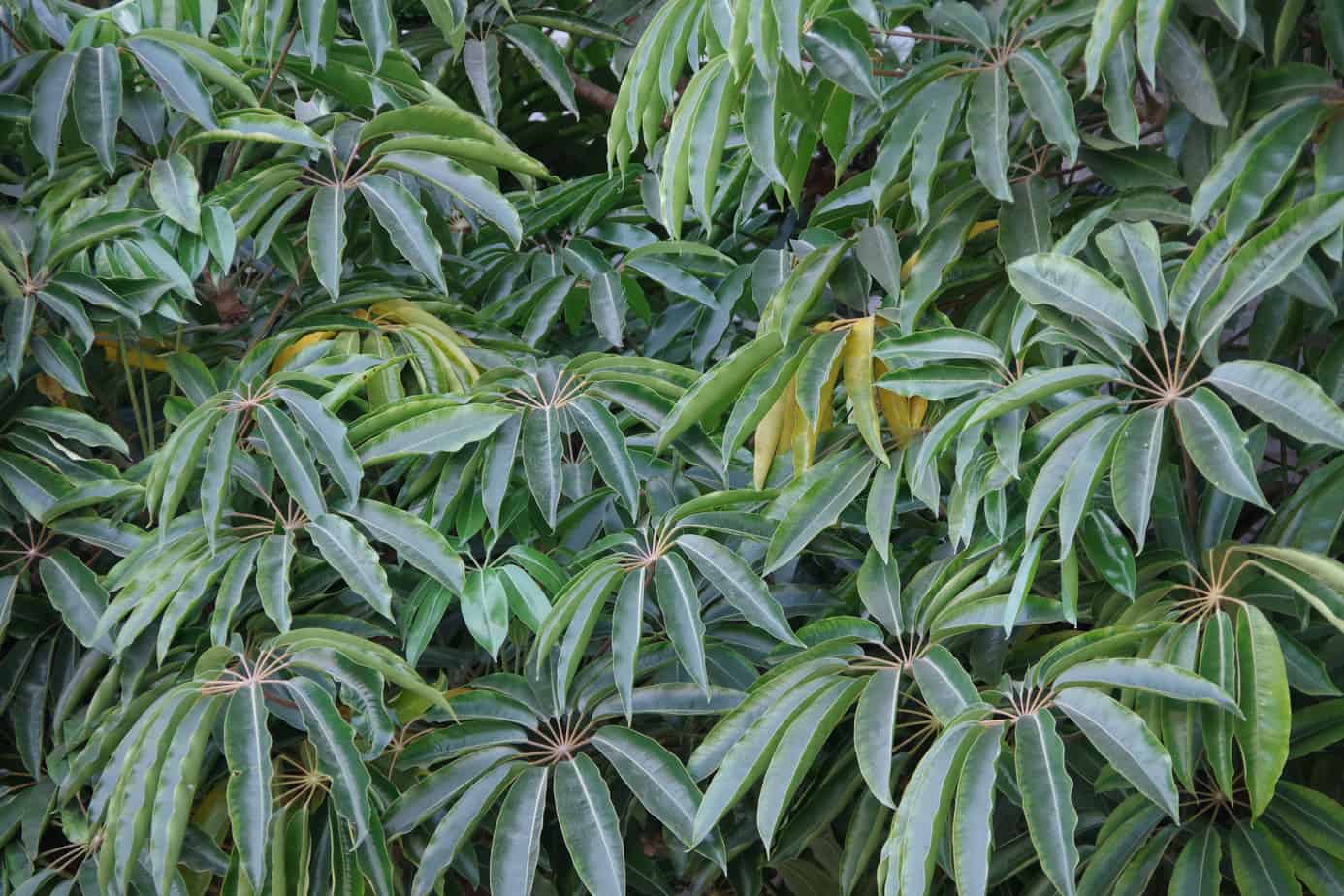
Schefflera alpine plant is known as the hardy schefflera. It has dark-green foliage and it can grow up to 5 meters in height.
Schefflera Amate
This is a popular tropical houseplant characterized by its lush, glossy green foliage and attractive palm-like appearance. It is easy to care for and thrives in indirect light. Schefflera Amate adds a touch of elegance to indoor spaces, making it a favored choice among plant enthusiasts.
Schefflera Arboricola Plant Diseases & Pests
Occasionally, your schefflera plant may be bothered by certain diseases such as bacterial leaf spots and alternaria leaf spots. These diseases are a result of too much overhead watering especially if it’s done in the evening.
Pests such as mealybugs, spider mites, and aphids may also be a problem for schefflera plants grown indoors. You may use soapy water to eliminate them or in other instances, neem oil.
Frequently Asked Questions
Aside from being a gorgeous houseplant, umbrella trees also serve as an air-purifying plant. It’s always a good idea to place this indoors especially if you have an enclosed place.
Yes. Schefflera plants are known to be mildly toxic to pets as well as humans. They contain a considerable amount of calcium oxalate crystals that may cause irritation and burning sensation in the mouth. Some even experience drooling and vomiting after consuming this plant.
Because the schefflera leaves resemble the appearance of fingers, they’re considered lucky in Feng Shui. It is known as a lucky 7 plant which is believed to attract wealth.
The umbrella tree loves bright light. In some regions if the summer is not too hot, they can tolerate full sun. It’s best to place your umbrella plant in a bright, indirect light.
These popular houseplants can flourish indoors year-round when provided with the correct care. To grow Schefflera in bright indirect light and offer them with lukewarm water as needed. These tropical plants prefer the soil to dry between watering.
Leave the soil dry between watering as you do not want to overwater your Schefflera plants. If moist, do not water them.
It can grow quite tall as an indoor plant, and if the soil is too wet or dry, it will cause a leaf drop. Regarding Schefflera plant care, please do not move your plants around where they can be exposed to extreme heat or cold.
Whether you want to buy, sell or simply reach out to other plant enthusiasts, Plantly is the right place to be!
-
$6.00Sold By: Smoot's Farm
In stock
Succulent Succulent Haworthia Herbacea 2″ Pot Live Plant
Only 5 available and it’s in 1 people’s basketRated 4.89 out of 5 based on 27 customer ratings00Sold By: Smoot's Farm -
$44.00Sold By: NEEPA HUT
In stock
6″ Braided Money Tree Plant + Planter Basket
Only 10 available and it’s in 3 people’s basketRated 4.99 out of 5 based on 221 customer ratings06Sold By: NEEPA HUT -
$11.99Sold By: Succulent Oasis
In stock
Cactus Plant Medium Chamaelobivia “Rose Quartz”
Rated 4.84 out of 5 based on 352 customer ratings02Sold By: Succulent Oasis -
$12.99Sold By: BubbleBlooms
In stock
Pilea peperomioides / Chinese money plant / Chinese missionary plant
Only 993 available and it’s in 4 people’s basketRated 4.81 out of 5 based on 279 customer ratings04Sold By: BubbleBlooms

